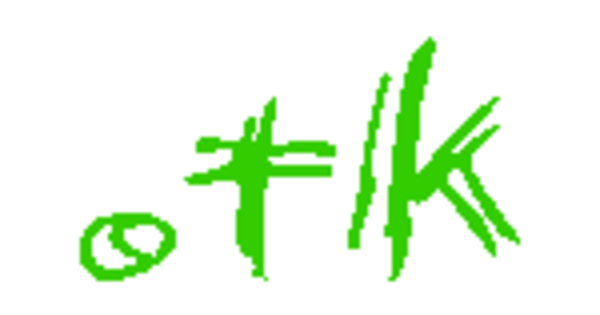Microsoft Word can produce much more than simple letters and plain text. Take a look at the Design and Layout tools and you'll be amazed at how much they can help even beginners create attractive layouts for brochures, flyers, and newsletters.
The more complicated your layout and content, the more you'll need the help of a design professional — and maybe a high-quality desktop publishing package too. But before you do, give Word's built-in talents a try.
Work with a template...
The easiest way to create more complex documents in Word is to use a template. Word has hundreds of them, from newsletters and flyers to business cards and faxes. To get started, go to File > New in the left navigation bar, and you'll be presented with a selection of popular templates (including the default blank page) with the search box above it.

Templates are pre-populated with images and sample text, which you can easily replace with your own images and text (you can click on a block of text and start typing, or paste text and images you've previously copied to the clipboard). But even if you want to change design elements (like fonts, for example), you can start with a template to use the preset margins and other basic layout parameters that are tricky to create from scratch.
...or work with themes
If you prefer to start from scratch with a blank page, you can set page dimensions, margins, columns, and other basic defaults in the Page Layout ribbon. You can also click the design click to choose a theme - a collection of fonts for popular layout options such as titles, subheadings, and body text. You can of course specify these individually as you type, but the fonts in a particular theme are chosen and sized according to generally accepted design standards so that they look good side by side.
It design tab also offers collections of color palettes and effects that you can apply to give character to your layout. For example, you can choose a certain color from a palette for a border, and a different color for subheadings. (Once you've selected a theme, the colors will appear in the palette when you tap the Font Color icon on the Home ribbon.) You can experiment with different looks by hovering your cursor over a theme (or any other design element in the ribbon), which is then applied to the appropriate part of your document. To make the change permanent, click on the desired element.

With another option in the tab design you can apply a background color, pattern, or even an image to your document. click on Page Color to see these options - it's a nice alternative to the usual solid white.
Play with typography
There's nothing more boring than a page full of plain text, but sometimes you don't have many images to ease the monotony. There are tools to make your layouts more interesting, such as initials, subheadings, and pullquotes - and they are relatively easy to apply in Word.
Adding initials - big capital letters - to a paragraph is simple: In the Insert ribbon, click it Add a Drop Cap icon in the text tools. You can choose between an enlarged capital letter embedded in the text, or in the left margin. Of Drop Cap options you can choose the font, the height (in number of lines of normal text), the character, and the spacing of the text.

A pullquote is a quote from text that you paste into a field and use as a design element, just like you would an image. It's a way to highlight an important part of the story, while also being visually appealing on the page. In Word, place the cursor near the area where you want to create a text box, and click it Text Box icon in the Insert ribbon. You will then be presented with a menu of several preformatted text box options. When you have chosen one, it will appear - with sample text - in your document. You can then replace the sample text with your own text and adjust options such as font size and color.

To the right of the field you can use a small icon to adjust how the field fits into the layout. For example, you can choose to have the text wrap around the field, or you can have the text above and below it (but not around it). You can also pin the position of the field to the page, or to the text surrounding it so that the field moves as the text moves.

With the Become Art icon on the Insert ribbon allows you to create colorful spectacular fonts with effects you won't find in standard fonts. You can use these characters to liven up a page, but try not to go crazy: A small amount can go a long way.
Images, charts and other content
You may have noticed by now that Text tools only a small part of it Insert ribbon, as there are so many other items you can add to enhance the look and effect of a document.
Images are an obvious choice. Current versions of Word include tools that allow you to perform basic image editing within the app. As for the text box, start by placing the cursor in the area where you want to place an image. Then click Pictures (or Online Pictures if you want to search for images in Office's huge collection of clip art), and click on the image you want to insert.

A number of things will happen: The image will appear in your document - if it's not exactly where you wanted it, you can simply drag it around. You can also make fine adjustments with the arrow keys when the image is in move mode.
At the same time it appears Picture Tools ribbon, filled with all sorts of options like cropping, artistic effects, and frames. As with text boxes, you can also get an icon next to the image that lets you choose how it fits into the text.

Word also has special tools for inserting shapes (for simple diagrams), SmartArt (for more complex business diagrams), and even Excel-like charts that you can create right away.
The latest graphic element in the Insert ribbon it is Screenshot icon: Click it and you can add all current screenshots to your Windows desktop - a handy tool for people who want to show computer processes.

You can add captions to graphic elements using the Insert Caption function in the References ribbon, but there's a downside to it: Since the feature is intended for academic publications, it's automatically numbered (in order) - and it's nearly impossible to remove them at print unless you're in Word's field codes. want to dive. If you want unnumbered captions with your images, you'll need to create a text box below (or next to) the image for the caption, or put them both in a box to merge them together, which is also a complicated procedure.
Make adjustments
Many of Word's tools can be applied on the fly, so if you don't like the way something looks you can easily change it. For example, you can flow text into columns simply by selecting it all and clicking on the number of columns you want in the Page Layout tab.

If you've added several elements to a document and they aren't behaving the way you want, you might find help in the Arrange section of the Page Layout tab. Here you can find features for aligning objects and bringing them in front of or behind other objects.
The last steps
Most commercial printers that work with small businesses will accept documents in PDF format, and Word allows you to save documents as PDF. However, there are different types of PDF files, so check with the printer beforehand if they can work with the PDF format generated by the version of Word you're using.
Word can't do everything a high-quality desktop publishing program can. For example, if you need cutting lines on pages, Microsoft recommends exporting your Word document to Publisher, Office's desktop publishing app. Desktop publishing packages can typically export to all major PDF types. High-end packages also allow you to create multiple master pages that can serve as templates for complex documents. Word makes it easy to create pages with headers and footers, but it's not so easy to combine them with other page styles in the same project.
But for people who simply want to make everyday documents - flyers, brochures, booklets and so on - look better, Word has a lot to offer. The learning curve isn't too steep, and if it's already on your desktop, the price is right.
This is a freely translated article from our American sister site PCWorld.com. Described terms, operations and settings may be region specific.

